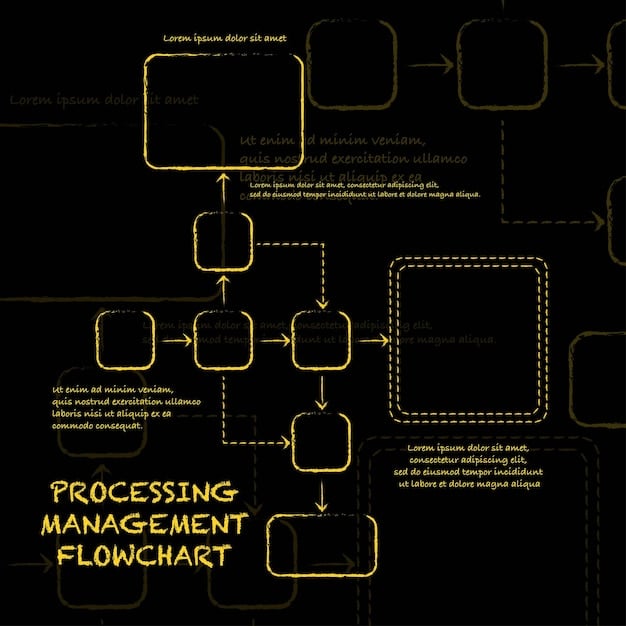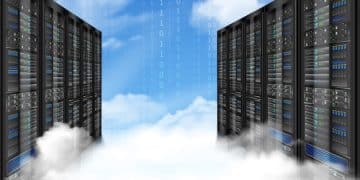Migrating Legacy Systems to the Cloud: A US Enterprise Guide

Migrating legacy systems to the cloud is a critical undertaking for US enterprises seeking scalability, efficiency, and cost savings, requiring a structured approach that encompasses assessment, planning, execution, and ongoing optimization.
For US enterprises grappling with outdated infrastructure, migrating legacy systems to the cloud presents a significant opportunity to modernize their operations and gain a competitive edge. But where do you start?
Understanding the Need for Cloud Migration
Legacy systems, while reliable in their time, often lack the agility and scalability required to thrive in today’s fast-paced business environment. Understanding the limitations of these systems is the first step in recognizing the necessity of cloud migration.
The Challenges of Legacy Systems
Legacy systems often present challenges that can hinder an organization’s ability to innovate and compete effectively.
- High Maintenance Costs: Maintaining outdated hardware and software can be expensive, consuming a significant portion of the IT budget.
- Limited Scalability: Legacy systems often struggle to scale to meet growing business demands, potentially leading to performance bottlenecks and lost opportunities.
- Security Vulnerabilities: Older systems may lack modern security features, making them vulnerable to cyberattacks and data breaches.
- Integration Issues: Integrating legacy systems with newer technologies can be complex and costly, hindering modernization efforts.
Benefits of Cloud Migration
Migrating to the cloud can address many of the challenges associated with legacy systems, offering numerous benefits for US enterprises.
- Cost Savings: Cloud computing can significantly reduce IT infrastructure costs by eliminating the need for on-premises hardware and reducing maintenance expenses.
- Increased Scalability: Cloud platforms offer on-demand scalability, allowing businesses to easily adjust resources to meet changing demands.
- Improved Security: Cloud providers invest heavily in security, offering robust protection against cyber threats and data breaches.
- Enhanced Agility: Cloud computing enables businesses to quickly deploy new applications and services, fostering innovation and agility.
By understanding the limitations of legacy systems and the potential benefits of cloud migration, US enterprises can make informed decisions about their IT strategies.
Assessing Your Current Infrastructure
Before embarking on a cloud migration journey, it’s crucial to conduct a thorough assessment of your existing infrastructure. This helps in identifying which systems should be migrated and determines the best migration strategy.
Inventory and Documentation
Begin by creating a comprehensive inventory of your existing hardware, software, and data. Document the architecture, dependencies, and configurations of each system.
Application Portfolio Analysis
Evaluate each application based on its business value, technical complexity, and suitability for the cloud. Identify applications that can be easily migrated and those that may require significant modifications or replacement.

Dependency Mapping
Understand the dependencies between different systems and applications. This helps in planning the migration sequence and minimizing disruptions.
Assessing your current infrastructure provides a clear understanding of the IT landscape, enabling you to develop a well-informed cloud migration strategy.
Choosing a Cloud Migration Strategy
Different cloud migration strategies cater to varying business needs and technical capabilities. Selecting the right strategy is vital for a successful migration.
Rehosting (Lift and Shift)
Rehosting involves moving applications to the cloud without making any significant changes. This is the fastest and simplest approach, suitable for applications with minimal dependencies and those that are relatively cloud-ready.
Replatforming (Lift, Tweak, and Shift)
Replatforming involves making minor modifications to applications to take advantage of cloud-native features. This approach offers a balance between speed and optimization.
Refactoring (Re-architecting)
Refactoring involves re-architecting applications to fully leverage the cloud’s capabilities. This is the most complex and time-consuming approach but offers the greatest benefits in terms of performance, scalability, and cost efficiency.
Repurchasing (Replace)
Repurchasing involves replacing existing applications with cloud-based alternatives. This approach is suitable for applications that are no longer meeting business needs or are too complex to migrate.
Choosing the right cloud migration strategy depends on the specific characteristics of your applications and your overall business goals.
Planning the Migration Process
Careful planning is essential to ensure a smooth and successful cloud migration. A well-defined plan minimizes risks and maximizes the benefits of cloud adoption.
Defining Objectives and Scope
Clearly define the objectives of the cloud migration, such as reducing costs, improving performance, or enhancing security. Define the scope of the migration, including the systems and applications that will be moved to the cloud.
Developing a Timeline and Budget
Create a realistic timeline for the migration process, taking into account the complexity of each application and the chosen migration strategy. Develop a detailed budget that includes all costs associated with the migration, such as cloud resources, migration tools, and professional services.
Risk Assessment and Mitigation
Identify potential risks associated with the migration, such as data loss, downtime, and security vulnerabilities. Develop mitigation strategies to address these risks.
Data Migration Planning
Plan the data migration process carefully, considering factors such as data volume, data sensitivity, and data transfer speeds. Choose a suitable data migration tool and develop a detailed migration plan.
Thorough planning is essential for a successful cloud migration, ensuring that the process is well-managed and minimizes potential disruptions.
Executing the Migration
With a solid plan in place, you can begin the execution phase of the cloud migration. This involves migrating applications, data, and infrastructure to the cloud.
Setting up the Cloud Environment
Provision the necessary cloud resources, such as virtual machines, storage, and networking components. Configure security settings and access controls to protect your cloud environment.

Migrating Applications and Data
Follow the chosen migration strategy to migrate applications and data to the cloud. Monitor the migration process closely to ensure that it is proceeding according to plan. Conduct thorough testing to verify that the migrated applications are functioning correctly.
Testing and Validation
Thoroughly test all migrated applications and systems to ensure they function correctly in the cloud environment. Validate data integrity and security to prevent data loss or breaches.
- Functional Testing: Verify that all application features and functions are working as expected.
- Performance Testing: Ensure that the migrated applications meet performance requirements in the cloud environment.
- Security Testing: Conduct security audits and penetration tests to identify and address any security vulnerabilities.
Executing the migration involves careful implementation of the migration plan, ensuring that applications and data are moved to the cloud smoothly and securely.
Post-Migration Optimization and Management
After the migration is complete, it’s crucial to optimize and manage the cloud environment to maximize its benefits.
Performance Monitoring and Tuning
Monitor the performance of applications and infrastructure in the cloud. Identify and address any performance bottlenecks. Optimize resource utilization to reduce costs.
Cost Management
Implement cost management tools and practices to track and control cloud spending. Right-size resources to avoid over-provisioning. Take advantage of reserved instances and other cost-saving options.
Security and Compliance
Monitor the cloud environment for security threats and vulnerabilities. Implement security best practices and ensure compliance with relevant regulations.
Automation and DevOps
Automate routine tasks such as deployment, configuration management, and monitoring. Adopt DevOps practices to improve efficiency and collaboration.
Post-migration optimization and management are essential for realizing the full potential of cloud computing, enabling businesses to achieve cost savings, improve performance, and enhance security.
| Key Point | Brief Description |
|---|---|
| 💡 Assessment | Evaluate current systems for cloud readiness. |
| 🗺️ Strategy | Choose the right migration method (rehost, replatform, etc.). |
| 🚀 Execution | Migrate applications and data securely. |
| 🔒 Security | Implement robust security measures in the cloud. |
Frequently Asked Questions
Key challenges include ensuring data integrity, minimizing downtime, handling complex dependencies, and addressing security concerns during the migration process, specially inside US territory.
Consider factors such as application complexity, business requirements, budget constraints, and the desired level of cloud optimization when selecting a migration strategy.
Implement robust security measures, including encryption, access controls, and threat detection, to protect data and applications during and after the migration process, and specially inside US territory.
Utilize techniques such as phased migration, blue-green deployments, and automated testing to minimize downtime and ensure business continuity during the migration process.
Key KPIs include cost savings, performance improvements, reduced downtime, enhanced security, and increased business agility after the successful completion of the cloud migration.
Conclusion
Migrating legacy systems to the cloud is a transformative endeavor for US enterprises, offering significant benefits in terms of cost savings, scalability, and agility. By following a step-by-step guide and carefully planning each stage of the process, organizations can successfully modernize their IT infrastructure and unlock new opportunities for growth and innovation.





